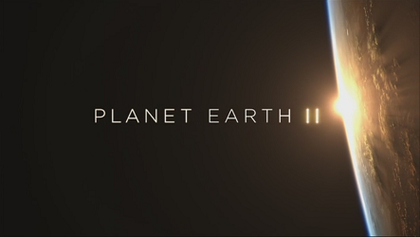Introduction:
“Planet Earth II,” the acclaimed documentary series narrated by Sir David Attenborough, takes audiences on a mesmerizing journey through the diverse ecosystems of our planet. Released in 2016, this sequel to the groundbreaking “Planet Earth” series continues the tradition of delivering awe-inspiring visuals, compelling narratives, and a profound exploration of the natural world. In this comprehensive review, we delve into the series’ breathtaking cinematography, narrative structure, the significance of its technological advancements, and the profound impact it has had on both documentary filmmaking and environmental awareness.
I. Cinematic Splendor:
A. Technological Advancements:
- “Planet Earth II” showcases groundbreaking technological advancements in wildlife filmmaking.
- The use of cutting-edge camera equipment, including drones and remote-controlled cameras, provides unprecedented access to the natural behaviors of animals.
B. Aerial Cinematography:
- A standout feature of the series is the breathtaking aerial cinematography.
- Aerial shots capture the vastness and beauty of landscapes, immersing viewers in the grandeur of the natural world.
C. Intimate Perspectives:
- The series employs innovative filming techniques to capture intimate perspectives of wildlife.
- The use of concealed cameras and innovative hide placements allows for unobtrusive observation of animals in their natural habitats.
II. Narration and Storytelling:
A. Sir David Attenborough’s Narration:
- Sir David Attenborough’s narration remains a hallmark of the series.
- His authoritative yet empathetic voice guides viewers through the narratives, enhancing the emotional connection to the wildlife.
B. Storytelling Structure:
- Each episode of “Planet Earth II” follows a thematic structure, focusing on different environments and the challenges faced by the resident wildlife.
- The episodic approach allows for in-depth exploration and creates a cohesive narrative arc.
C. Personalizing Wildlife:
- The series excels in personalizing wildlife stories, attributing individual characteristics to animals.
- This storytelling approach fosters empathy and allows viewers to relate to the struggles and triumphs of the featured species.
III. Ecosystem Exploration:
A. Urban Environments:
- “Planet Earth II” ventures into urban environments, exploring how wildlife adapts to the challenges of city life.
- The juxtaposition of nature and urbanity prompts contemplation on the impact of human development on wildlife.
B. Islands, Jungles, and Deserts:
- The series traverses diverse ecosystems, from isolated islands to dense jungles and vast deserts.
- Each episode presents a unique set of challenges and showcases the remarkable adaptations of the animals inhabiting these environments.
C. Human-Wildlife Interactions:
- “Planet Earth II” addresses the complex interactions between humans and wildlife.
- Episodes highlight both the detrimental and positive effects of human presence on the natural world.
IV. Environmental Advocacy:
A. Raising Awareness:
- The series serves as a powerful tool for environmental advocacy.
- By portraying the beauty and fragility of ecosystems, “Planet Earth II” raises awareness about the importance of conservation.
B. Conservation Impact:
- “Planet Earth II” has had a tangible impact on conservation efforts.
- The series has inspired individuals, organizations, and governments to take action to protect vulnerable species and their habitats.
V. Musical Score:
A. Compositional Excellence:
- The musical score, composed by Hans Zimmer, enhances the emotional resonance of the series.
- Zimmer’s evocative compositions complement the visuals, creating a harmonious marriage of sight and sound.
B. Immersive Sound Design:
- The series features immersive sound design that transports viewers into the heart of each ecosystem.
- The meticulous attention to audio details enhances the viewing experience, allowing audiences to feel a visceral connection to the natural world.
VI. Cultural and Scientific Contributions:
A. Cultural Impact:
- “Planet Earth II” transcends documentary filmmaking, becoming a cultural phenomenon.
- The series has sparked conversations, inspired art, and influenced popular culture, attesting to its widespread impact.
B. Scientific Contributions:
- The scientific contributions of “Planet Earth II” are substantial.
- The series provides valuable insights into animal behavior, ecology, and the intricate relationships between species and their environments.
VII. Legacy and Critical Reception:
A. Critical Acclaim:
- “Planet Earth II” received widespread critical acclaim for its stunning visuals, storytelling, and environmental message.
- The series has been lauded as a landmark achievement in documentary filmmaking.
B. Awards and Recognition:
- The series garnered numerous awards, including Emmy Awards and BAFTA TV Awards.
- Its success solidified its place as one of the most celebrated documentaries in the history of television.
VIII. Conclusion:
“Planet Earth II” (2016) stands as a testament to the power of visual storytelling and its capacity to ignite a deep appreciation for the natural world. With its unparalleled cinematography, evocative storytelling, and commitment to environmental advocacy, the series transcends the boundaries of traditional documentary filmmaking. Sir David Attenborough’s narration, coupled with Hans Zimmer’s emotive score, elevates “Planet Earth II” to a cinematic masterpiece that not only educates but also inspires action. Its enduring legacy lies not only in its critical acclaim but in the positive impact it has had on global perceptions of wildlife, ecosystems, and the urgent need for conservation. As we continue to navigate an ever-changing world, “Planet Earth II” serves as a timeless reminder of the majesty of nature and the shared responsibility to safeguard the planet for future generations.
